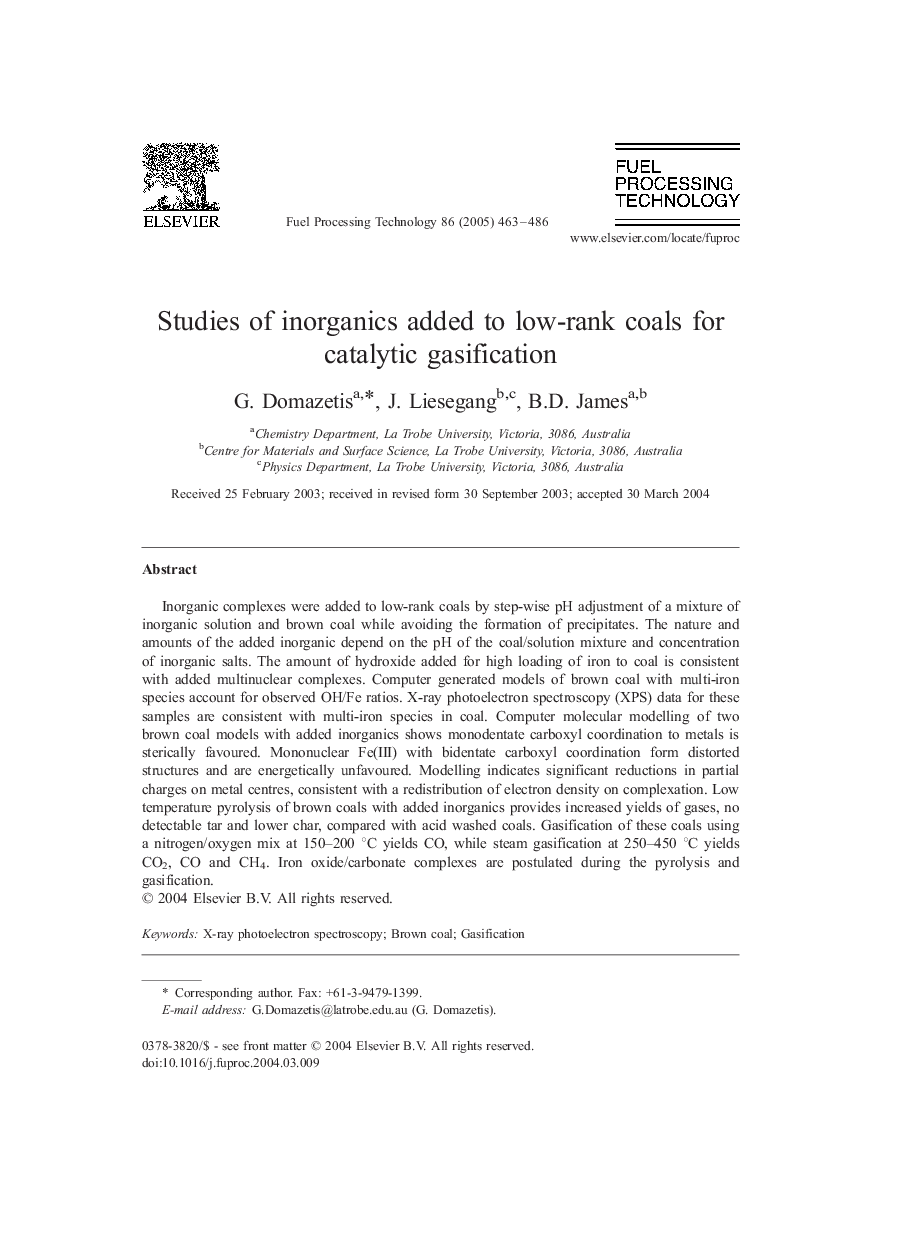| Article ID | Journal | Published Year | Pages | File Type |
|---|---|---|---|---|
| 10274886 | Fuel Processing Technology | 2005 | 24 Pages |
Abstract
Inorganic complexes were added to low-rank coals by step-wise pH adjustment of a mixture of inorganic solution and brown coal while avoiding the formation of precipitates. The nature and amounts of the added inorganic depend on the pH of the coal/solution mixture and concentration of inorganic salts. The amount of hydroxide added for high loading of iron to coal is consistent with added multinuclear complexes. Computer generated models of brown coal with multi-iron species account for observed OH/Fe ratios. X-ray photoelectron spectroscopy (XPS) data for these samples are consistent with multi-iron species in coal. Computer molecular modelling of two brown coal models with added inorganics shows monodentate carboxyl coordination to metals is sterically favoured. Mononuclear Fe(III) with bidentate carboxyl coordination form distorted structures and are energetically unfavoured. Modelling indicates significant reductions in partial charges on metal centres, consistent with a redistribution of electron density on complexation. Low temperature pyrolysis of brown coals with added inorganics provides increased yields of gases, no detectable tar and lower char, compared with acid washed coals. Gasification of these coals using a nitrogen/oxygen mix at 150-200 °C yields CO, while steam gasification at 250-450 °C yields CO2, CO and CH4. Iron oxide/carbonate complexes are postulated during the pyrolysis and gasification.
Related Topics
Physical Sciences and Engineering
Chemical Engineering
Chemical Engineering (General)
Authors
G. Domazetis, J. Liesegang, B.D. James,
